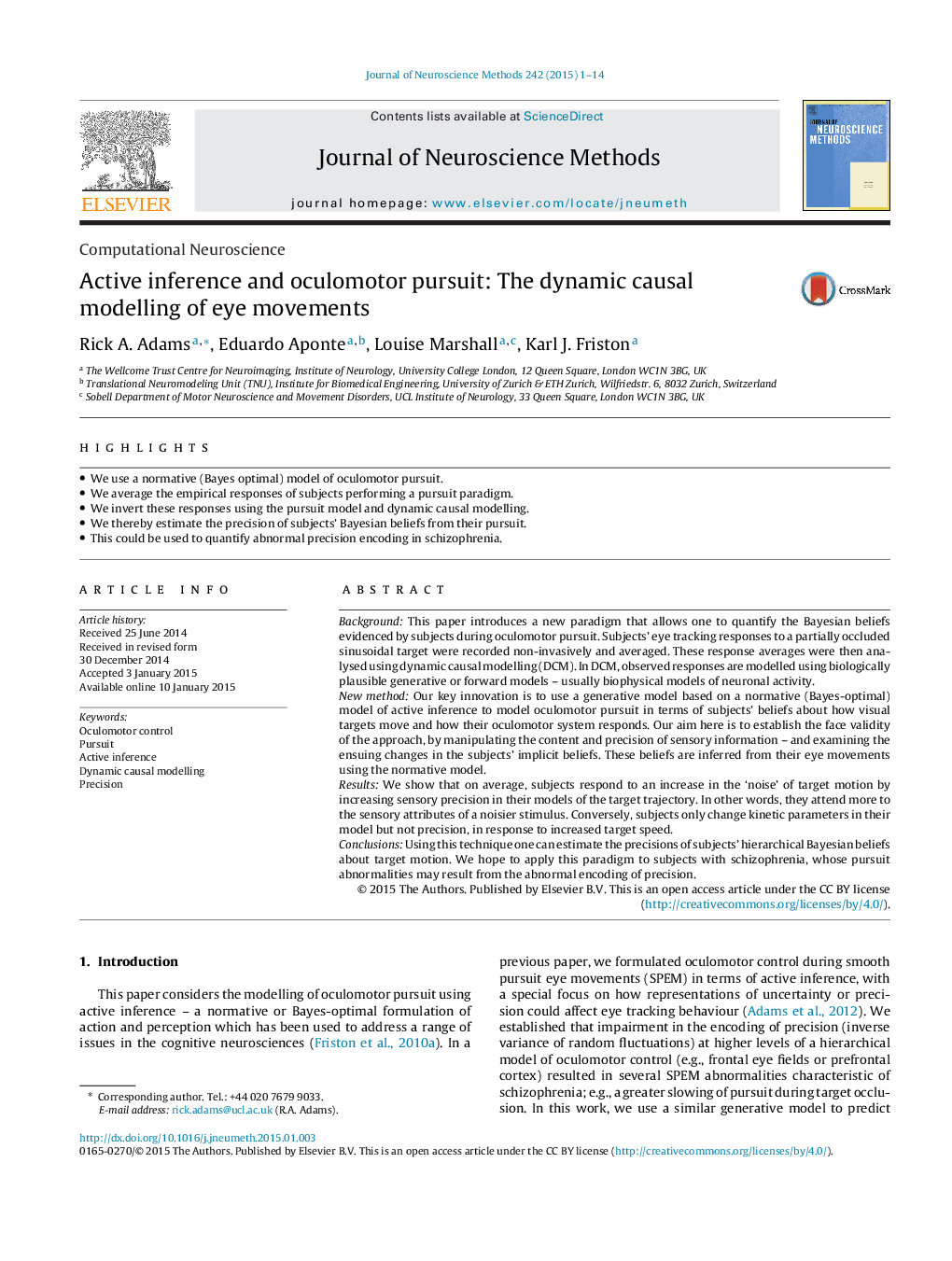| Article ID | Journal | Published Year | Pages | File Type |
|---|---|---|---|---|
| 6268380 | Journal of Neuroscience Methods | 2015 | 14 Pages |
â¢We use a normative (Bayes optimal) model of oculomotor pursuit.â¢We average the empirical responses of subjects performing a pursuit paradigm.â¢We invert these responses using the pursuit model and dynamic causal modelling.â¢We thereby estimate the precision of subjects' Bayesian beliefs from their pursuit.â¢This could be used to quantify abnormal precision encoding in schizophrenia.
BackgroundThis paper introduces a new paradigm that allows one to quantify the Bayesian beliefs evidenced by subjects during oculomotor pursuit. Subjects' eye tracking responses to a partially occluded sinusoidal target were recorded non-invasively and averaged. These response averages were then analysed using dynamic causal modelling (DCM). In DCM, observed responses are modelled using biologically plausible generative or forward models - usually biophysical models of neuronal activity.New methodOur key innovation is to use a generative model based on a normative (Bayes-optimal) model of active inference to model oculomotor pursuit in terms of subjects' beliefs about how visual targets move and how their oculomotor system responds. Our aim here is to establish the face validity of the approach, by manipulating the content and precision of sensory information - and examining the ensuing changes in the subjects' implicit beliefs. These beliefs are inferred from their eye movements using the normative model.ResultsWe show that on average, subjects respond to an increase in the 'noise' of target motion by increasing sensory precision in their models of the target trajectory. In other words, they attend more to the sensory attributes of a noisier stimulus. Conversely, subjects only change kinetic parameters in their model but not precision, in response to increased target speed.ConclusionsUsing this technique one can estimate the precisions of subjects' hierarchical Bayesian beliefs about target motion. We hope to apply this paradigm to subjects with schizophrenia, whose pursuit abnormalities may result from the abnormal encoding of precision.
